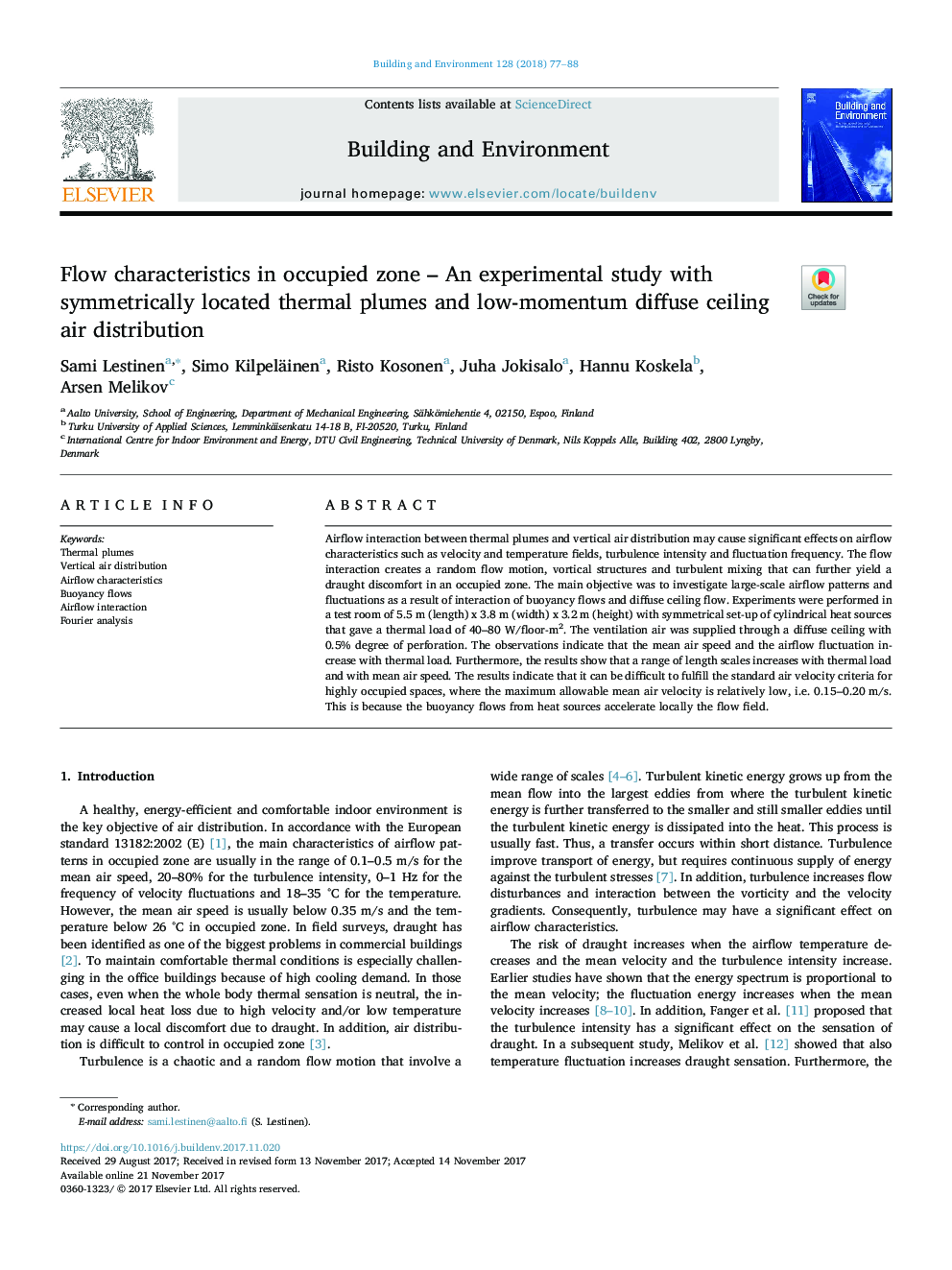| Article ID | Journal | Published Year | Pages | File Type |
|---|---|---|---|---|
| 6698297 | Building and Environment | 2018 | 12 Pages |
Abstract
Airflow interaction between thermal plumes and vertical air distribution may cause significant effects on airflow characteristics such as velocity and temperature fields, turbulence intensity and fluctuation frequency. The flow interaction creates a random flow motion, vortical structures and turbulent mixing that can further yield a draught discomfort in an occupied zone. The main objective was to investigate large-scale airflow patterns and fluctuations as a result of interaction of buoyancy flows and diffuse ceiling flow. Experiments were performed in a test room of 5.5Â m (length) x 3.8Â m (width) x 3.2Â m (height) with symmetrical set-up of cylindrical heat sources that gave a thermal load of 40-80 W/floor-m2. The ventilation air was supplied through a diffuse ceiling with 0.5% degree of perforation. The observations indicate that the mean air speed and the airflow fluctuation increase with thermal load. Furthermore, the results show that a range of length scales increases with thermal load and with mean air speed. The results indicate that it can be difficult to fulfill the standard air velocity criteria for highly occupied spaces, where the maximum allowable mean air velocity is relatively low, i.e. 0.15-0.20Â m/s. This is because the buoyancy flows from heat sources accelerate locally the flow field.
Related Topics
Physical Sciences and Engineering
Energy
Renewable Energy, Sustainability and the Environment
Authors
Sami Lestinen, Simo Kilpeläinen, Risto Kosonen, Juha Jokisalo, Hannu Koskela, Arsen Melikov,
